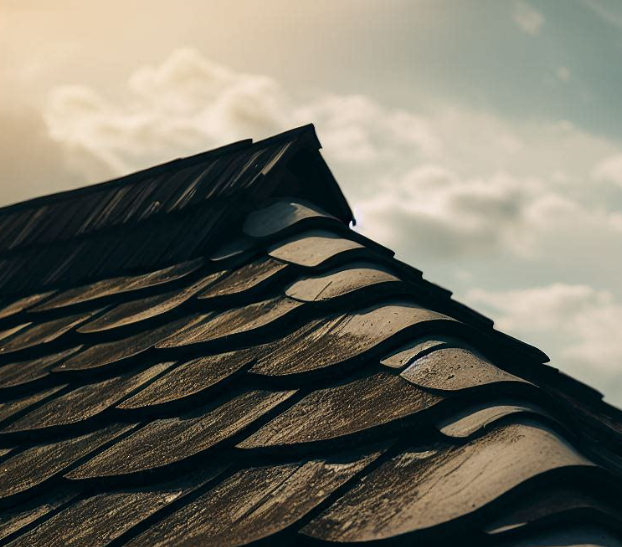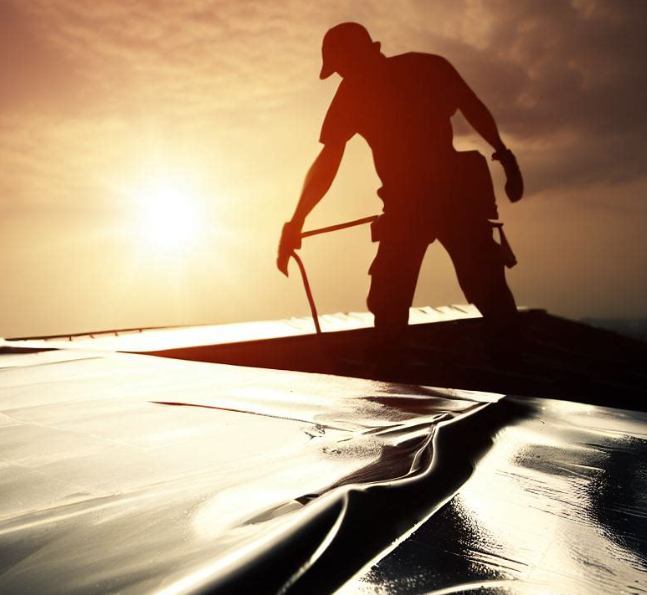
The construction industry has seen considerable transformation with the advent of architectural advances in the modern era. Among the many crucial elements involved in construction, the importance of roofing has greatly evolved. No longer perceived merely as an overhead surface, roofing has become an integral and often, focal point of every construction project. It presents itself as a vital shield against severe weather conditions as well as contributes significantly in upholding the aesthetic beauty of a structure.
A robust roof plays a protective role. Constructed meticulously, it stands as a fortress blocking the entry of elements like rain, snow, hail, gusty winds, and harsh temperatures. It acts as the primary guard that buffers the impact of these factors, thus preserving the safety of its inhabitants and the interior elements of the building. This eradicates any possible damages and fosters a safe environment within the structure.
An integral role of roofing stems from its contribution to the building’s structural integrity. A deftly conceived and constructed roof aids in dispersing the weight of a building in an even manner. This strategic distribution helps circumvent potential hazards that may originate due to disproportionate weight placement. As a direct outcome of this, the lifespan and durability of the building witness a substantial enhancement in its longevity.
Keeping pace with modern times, contemporary roofing systems have paved the way for increased energy efficiency within buildings. Advancements such as cool roofs and green roofs significantly slash energy consumption and expenses, proving to be a boon to property owners. These technologies also foster a positive effect on the environment thus contributing to sustainable living.
Roofing in construction today goes beyond practical purposes to exemplify a blend of protection, resilience, aesthetic quality and sustainable living. Thus, its importance in building construction is indisputable, serving numerous purposes ranging from safety and robustness, to aesthetic allure and energy conservation. This underlines the critical role of roofing in the realm of construction engineering and its massive impact on the success of every construction venture.
The Indispensable Role of Waterproofing in Building Construction
Understanding the significant role of waterproofing in building construction is essential for successful and sustainable projects. Primarily, waterproofing methods provide a robust defense line against water infiltration. Initially deployed during the construction process, these methods safeguard the integrity of various sections of a building, your basement to the rooftop being good examples. Waterproofing ensures their dryness, shielding them from destruction caused by moisture-related issues, hence contributing to their extended lifespan.
The main objective of these techniques is not only to protect the structural integrity of the buildings but also to minimize health risks for the occupants. Persistent dampness and seepage often create a fertile environment for the cultivation of harmful molds and mildews. These generally lead to respiratory issues, making their effective elimination vital. Fortifying structures against water damage through waterproofing consequently, enhances the general health of a building’s occupants.

One core advantage of waterproofing during the building construction phase is its contribution to long-term cost-saving efforts. Numerous cityscapes highlight examples of structures that suffered significant damage due to the lack of adequate waterproofing. Restoring such damage hugely impacts the property’s maintenance budget, often exceeding the initial construction costs. Consequently investing sagaciously in high-quality waterproofing during the construction process is a preventative measured choice to reduce future costs.
Waterproofing supplements the life-span of buildings. While this concept has been thoroughly embraced in most aspects of modern construction, understanding its importance comprehensively remains vital. It promotes healthier environments while simultaneously protecting the structural integrity of the buildings. An investment in waterproofing is a step towards sustainable development, a venture that yields benefits in the long run.
Effective waterproofing measures resulting from strategic implementation during the building construction stage significantly minimize the extensive damage often resultant from water infiltration, thus, contributing to the longevity of structures, health wellness of occupants, and cost-saving strategies. Memory of shortcuts in quality can lead to widespread water damage, resulting in extensive repair costs that overshadow the initial input in a functional waterproofing system.
Investing in a good waterproofing system is an essential part of sustainable construction. It proves advantageous by providing relief from potential health hazards and preventing moisture-related damage. This solidifies waterproofing’s indispensable role in the building industry as the preventative measure against incurred costs and potential health hazards. It continues to cement its enduring and valuable place in construction, contributing to healthier and sturdier structures all around.
The Integration of Roofing and Waterproofing in Building Construction
The realm of building construction is evolving. Its evolution is marked by innovative strategies, with one of them being the integration of roofing and waterproofing. These elements, frankly, are pivotal in defining the quality of a building. They combine marvelous aspects in their individual roles; but when integrated, they operate in harmony to enhance a building’s longevity, functionality, and economic viability.
Applying roofing and waterproofing techniques concurrently results in an exemplary sturdy structure. The building acquire an extraordinary resilience against weathers of all sorts, its wear and tear over the years is reduced, and thus, with time, the recurring maintenance costs are diminished.
Looking beyond the mere physical advantages, the integration of roofing with waterproofing holds significance in an environmental context too. By betting on these techniques, one nudges the construction industry on a path of ecological responsibility. These approaches help to bring down the energy consumption levels of a building, through concepts such as insulation and temperature control, thereby effectively reducing the overall carbon footprint. Thus, it not only benefits the homeowners but also undeniably contributes positively to the environment.
Protecting the integrity and sustainability of a building, every single layer counts, especially the roofing and waterproofing systems that form its shield, its first line of defense against external elements. Their importance cannot be underrated, and their roles cannot stay isolated, for they provide a solution for healthier, safer, and more energy-efficient buildings.
Construction industry professionals need to reckon the true potential of integrating roofing and waterproofing in building construction. The benefits far outweigh the initial expenditure, and the long-term results benefit not just individuals or companies, but the society at large.
It’s not an exaggeration to remark that this shift in perspective, considering the integration of roofing and waterproofing as an integral part of the construction process, can bring about substantial improvements in the construction industry. Embracing this can be a step towards agile, durable and sustainable construction, and undeniably, a large stride in economical as well as environmental conservation.